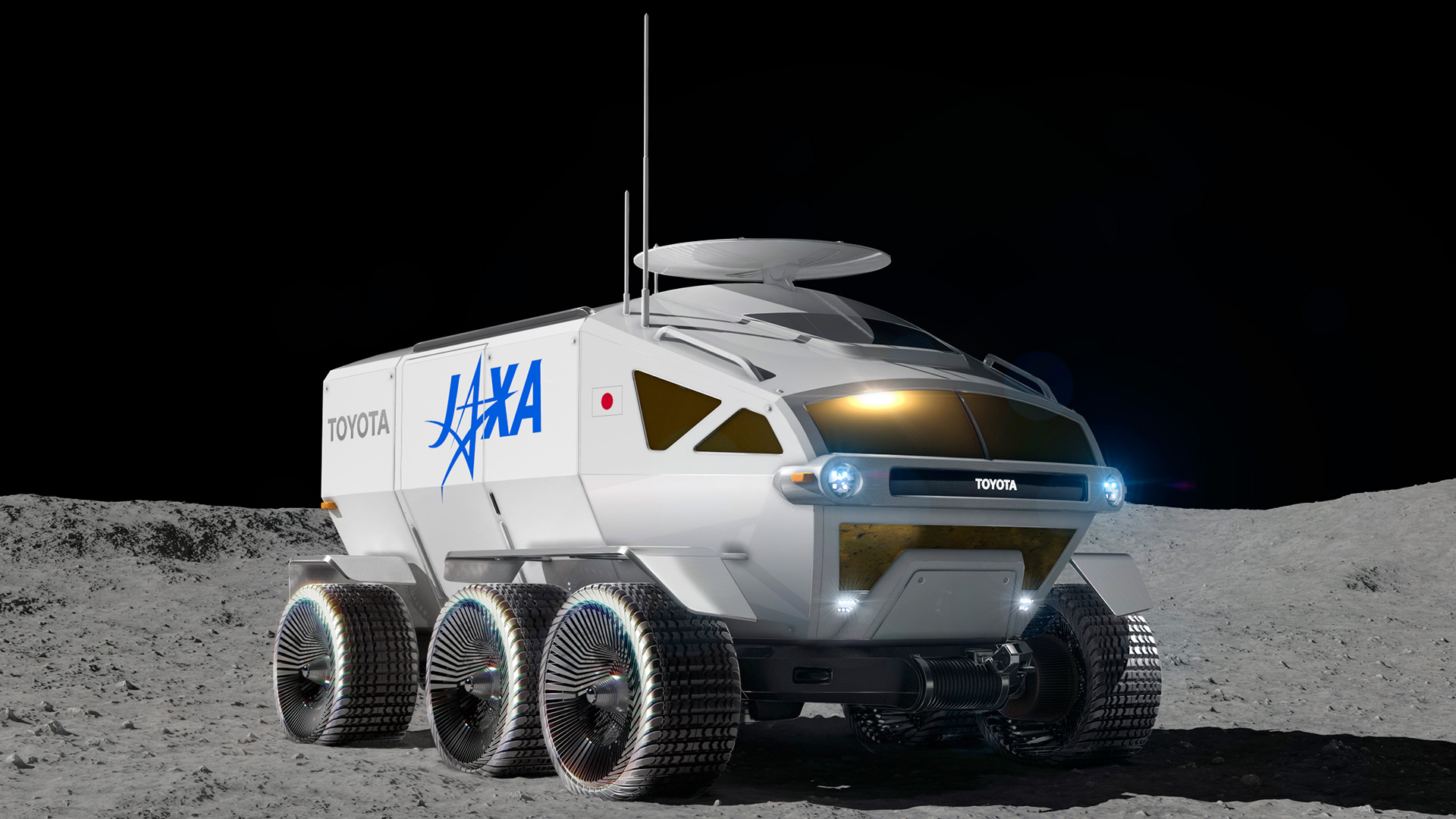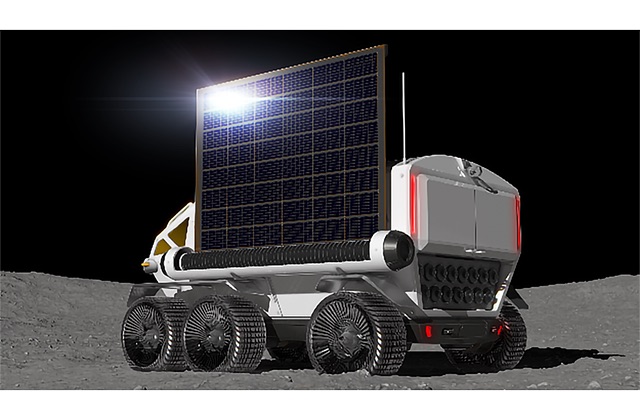Toyota, Japan to Launch Huge Moon Rover for Astronauts in 2029

A decade or so from now, astronauts could be cruising around the moon inside a Toyota rover.
The carmaker and the Japan Aerospace Exploration Agency (JAXA) just signed a three-year agreement to jointly develop a pressurized lunar rover, which will incorporate fuel-cell electric-vehicle technologies.
"Over the course of the three-year joint research period, JAXA and Toyota will manufacture, test and evaluate prototypes, with the goal of developing a manned, pressurized lunar rover and exploring the surface of the moon as part of an international project," Toyota representatives wrote in a July 16 statement.
Related: 50 Years After Apollo 11, A New Moon Rush Is Coming



The agreement runs from June of this year through the end of fiscal year 2021, Toyota representatives added.
Toyota set up a new department called Lunar Exploration Mobility Works on July 1 and plans to have about 30 people working there by the end of the year.
If all goes according to plan, Toyota and JAXA will build a full-scale prototype in the 2022 time frame, design the flight model and build and test an engineering model about two years later, and build and test the flight model around 2027.
Breaking space news, the latest updates on rocket launches, skywatching events and more!
Launch would follow in 2029.
"The rover will be used for missions to explore the moon's polar regions, with the aim both of investigating the possibility of using the moon's resources ― such as frozen water ― and of acquiring technologies that enable exploration of the surfaces of massive heavenly bodies," Toyota representatives wrote in the statement.
There could be a number of customers interested in the moon rover.
For example, NASA plans to launch two astronauts to the south pole by 2024 and apparently wants to develop a research outpost in the region over the ensuing years. The European Space Agency has similar aims; it would like to help build a south pole "moon village" in the not-too-distant future.
In addition, a number of private companies plan to mine water ice near the lunar south pole, where the material is abundant on the floors of permanently shadowed craters. This water could be used for life support and, when broken into its constituent hydrogen and oxygen, as rocket fuel.
The Toyota/JAXA vehicle wouldn't be the first crewed vehicle to roam the lunar surface. NASA launched unpressurized, astronaut-driven "moon buggies" on the final three Apollo moon missions, in 1971 and 1972.
- Apollo 11 at 50: A Complete Guide to the Historic Moon Landing Mission
- Moon Master: An Easy Quiz for Lunatics
- How the Apollo 11 Moon Landing Worked (Infographic)
Mike Wall's book about the search for alien life, "Out There" (Grand Central Publishing, 2018; illustrated by Karl Tate), is out now. Follow him on Twitter @michaeldwall. Follow us on Twitter @Spacedotcom or Facebook.

Michael Wall is a Senior Space Writer with Space.com and joined the team in 2010. He primarily covers exoplanets, spaceflight and military space, but has been known to dabble in the space art beat. His book about the search for alien life, "Out There," was published on Nov. 13, 2018. Before becoming a science writer, Michael worked as a herpetologist and wildlife biologist. He has a Ph.D. in evolutionary biology from the University of Sydney, Australia, a bachelor's degree from the University of Arizona, and a graduate certificate in science writing from the University of California, Santa Cruz. To find out what his latest project is, you can follow Michael on Twitter.
